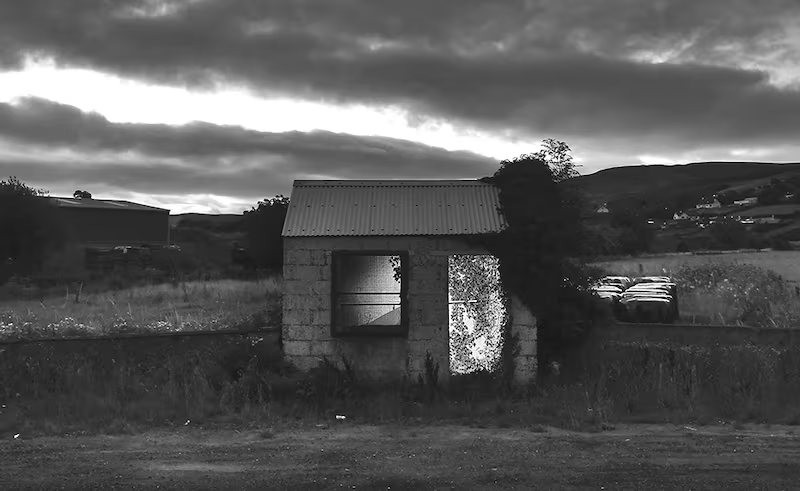Britain is exploring alternative options to the Irish backstop within the Withdrawal Agreement, after parliament voted to order Theresa May to renegotiate the terms, Brexit minister Stephen Barclay said.
MPs voted on Tuesday to support the prime minister's Brexit deal if she secures changes from Brussels to the Northern Ireland backstop - an insurance policy written into the Withdrawal Agreement, or Brexit treaty, guaranteeing no harder border on the island of Ireland.
At the end of a dramatic day at Westminster, MPs endorsed the proposal by 317 votes to 301, a majority of 16.

The DUP’s 10 MPs joined Conservative Brexiteers to support the amendment after Mrs May said she would seek to reopen the text of the agreement. It was a striking reversal of fortune for Mrs May, who saw her Brexit deal rejected by 230 votes two weeks ago.
“The dynamic did change last night and it gives a clear mandate to the prime minister to take back to Brussels,” Mr Barclay told BBC radio on Wednesday.
He claimed that Tuesday night’s amendments, two weeks after Mrs May suffered the heaviest parliamentary defeat in modern history over the meaningful vote, had “overturned a defeat of 230 into a victory”.
Technology
Asked repeatedly what could replace the backstop in the deal he said: “There are a number of options, there are issues in terms of having time limits, issues in terms of exit clauses, issues in terms of technology and this will be the nature of the negotiation with the EU in the coming days.”
He said the UK was “exploring in terms of the use of technology... looking at things like the time limit” to deal with the backstop.
"There are a number of options, there are issues in terms of having time limits, issues in terms of exit clauses, issues in terms of technology and this will be the nature of the negotiation with the European Union in the coming days."
However, Tánaiste and Minister for Foreign Affairs Simon Coveney said Brexit negotiators have spent two years looking at alternatives to the backstop and not found any that work.
“We have been through all of these things. We have tested them and we have found that they do not stand up to scrutiny, and now we have a British prime minister advocating again for the same things that were tested,” Mr Coveney told RTÉ Radio.
Mrs May will meet Labour Party leader Jeremy Corbyn later on Wednesday to discuss Brexit. The meeting comes two weeks after Mr Corbyn rejected the prime minister's invitations on the grounds that she should first rule out a no-deal Brexit.
Mrs May is also due to speak to Taoiseach Leo Varadkar by telephone on Wednesday.
Mr Corbyn told the House of Commons he would meet Mrs May because “parliament has voted to remove the immediate threat of crashing out without a deal on 29 March”.
The decision to hold the meeting follows internal pressure upon Labour’s leader from some of his closest aides.
One senior party source said: “If we want to avoid a no-deal Brexit, there has to be some level of negotiations between the parties. We have to be involved.”
At the meeting, a Labour source said that confirming rejection of a no deal will remain a key issue. “Jeremy will insist that the will of parliament is respected and that no deal is now off the table,” he said.
Stunt
Mr Corbyn will also press Labour’s Brexit plan, which envisages a customs union, a strong single-market relationship and a guarantee on workers’ rights, consumer standards and environmental protections. “That now must be the focus for negotiations,” the source said.
Two weeks ago, Mrs May wrote to Mr Corbyn urging him to take part in meetings with her and other ministers following the rejection of her negotiated deal on the withdrawal bill.
Mr Corbyn dismissed the invitation as a stunt.
In a speech in Hastings, he said: “With no deal on the table, the prime minister will enter into phoney talks just to run down the clock and try to blackmail MPs to vote through her botched deal on a second attempt by threatening the country with the chaos that no-deal would bring.”
They last met to discuss the Brexit process in November.
On Tuesday night, Mrs May said she would go back to Brussels.
"We will now take this mandate forward and seek to obtain legally binding changes to the withdrawal agreement that deal with concerns on the backstop while guaranteeing no return to a hard border between Northern Ireland and Ireland. My colleagues and I will talk to the EU about how we address the House's views," she said.
“There is limited appetite for such a change in the EU and negotiating it will not be easy. But in contrast to a fortnight ago, this House has made it clear what it needs to approve a withdrawal agreement.”
Terse statement
In a further boost for the PM, MPs rejected an amendment that could have postponed Brexit rather than leaving the EU without a deal. They backed another amendment that rejected a no-deal Brexit without prescribing any action to prevent it.
In Dublin, the Government issued a terse statement: "The EU position on the withdrawal agreement, including the backstop, is set out in the conclusions of the December meeting of the European Council. It has not changed."
It said that the administration would “continue our preparations for all outcomes, including for a no-deal scenario.”
European Council President Donald Tusk said the withdrawal agreement "remains the best and only way to ensure an orderly withdrawal". In a statement issued on his behalf, he said: "The backstop is part of the withdrawal agreement, and the withdrawal agreement is not open for renegotiation."
Mr Tusk and Mrs May will have a phone call about Brexit on Wednesday evening, his press office said.










